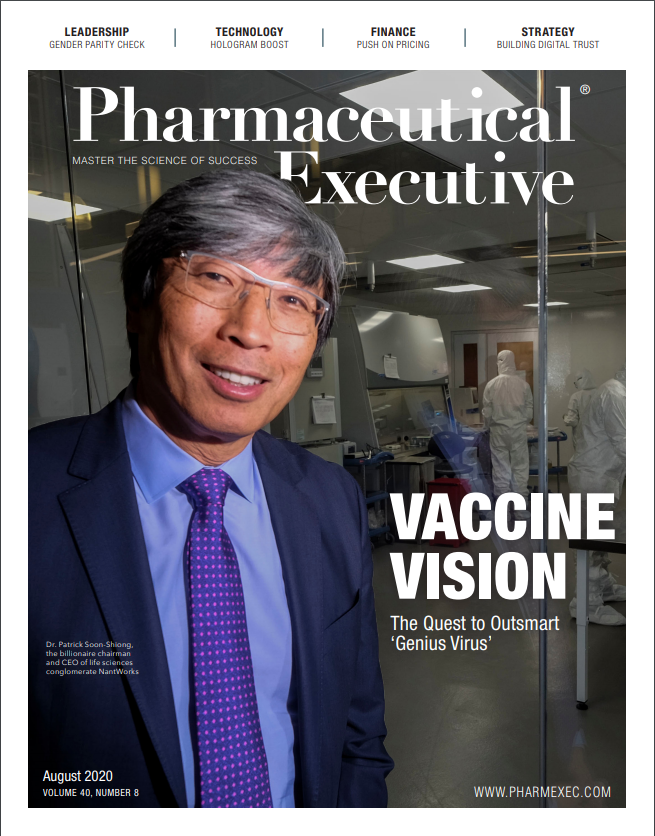Making Strides in Pharma Gender Parity
Collaboratives, company initiatives address systemic barriers.

When it comes to cures, pharma should know that treating the root cause of a disease is far more effective than simply treating the symptoms. So when it comes to the chronic condition of women being underrepresented in pharma, comprehending the why and how of the issue is essential to fixing the problem. Companies can check boxes to ensure they are meeting the targeted goals of a diversity program, but true gender parity can’t be achieved until companies and employees fully grasp the issue at its core.
Elaine Quilici

According to the 2019 Women in the Workplace study by McKinsey & Company and LeanIn.Org, progress has been slow. Across the 20-plus industries it examines, women represent 48% of entry level jobs and 21% of the c-suite; this is a 6% and 24% increase, respectively, from when the study began in 2015. Looking at the pharmaceutical and medical product industries, the 2019 study indicates women hold 56% of entry level positions. However, that number decreases through the ranks, with just 24% at the senior vice president level and 25% in the c-suite.
While there is much talk about the proverbial glass ceiling, closer analysis indicates the greatest barrier for women is in the middle of the corporate pipeline. The McKinsey study calls this the “broken rung” that prevents women from stepping up to the manager level. “If we focus on that first step, in five years, if we just did equal movement of women and men forward, we would move a million women ahead into management,” says Laurie Cooke, president and CEO of the Healthcare Businesswomen’s Association (HBA). “Then your talent pool is greater and you have more people to choose from, which helps all the way up the rest of the ladder.”
Many companies have gender parity initiatives, but most only scratch the surface. In 2018, HBA created its Gender Parity Collaborative, a consortium of healthcare and life science companies dedicated to systemically accelerating gender parity. It began with more than 30 senior leaders from 12 companies. Today, the 16-member firms represent a global workforce of 615,000 people. The group sees gender parity not just as a women’s issue but a business imperative. “It’s proven that more women at all levels of leadership supports better bottom-line results,” says Cooke. “These companies recognize that if they can change the workplace environment, rather than trying to change the women, they’re going to make faster progress.”
The collaborative convenes throughout the year to discuss topics such as men as allies, salary disparities, the experiences of women of color vs. white women, and microaggressions. They are attended by people from all different areas and levels of experience throughout the companies. This variety of perspective is invaluable, says Cooke.
Engaging men in the conversation also provides diversity of thought. The Bristol Myers Squibb Network of Women (B-NOW) has 6,000 members, 1,000 of which are men, according to Adam Dubow, senior vice president, chief compliance and ethics officer at BMS, and the second man to join the board of the HBA collaborative. “We made a concerted effort to bring men into the fold, because we don’t view this as necessarily a women’s issue,” says Dubow. “This is a business and societal issue.”
The collaborative emphasizes accountability as well. Beyond firms sharing best practices and challenging one another to make improvements, HBA is an industry champion of the Women in the Workplace study. Collaborative members meet on a regular basis to discuss progress and share benchmarks. “To have the opportunity to learn from one another, but more importantly, to hold each other accountable and address the more systemic issues, is critical,” says Dubow.
Since 2018, collaborative companies have produced 12% more women on average across all levels, compared to non-members. As a way to help all firms support women, its website (www.genderparity.hbanet.org) includes resources for members and non-members.
Addressing systemic issues in individual company programs can only hasten progress. In 2018, Salix Pharmaceuticals launched its own Women’s Leadership Network (WLN) in a partnership with HBA. As part of the deal, employees receive an HBA membership, where they are able to share intellectual capital and broaden their network. Since the launch of the WLN, the number of women in leadership positions at Salix has more than doubled.
“We have increased the number of women in executive leadership roles while continuing to develop a diverse and talented roster of women in the management pipeline,” says Nicola Kayel, vice president of GI marketing at Salix and founder of the WLN. “As companies compete for great talent, it’s important that we look within our organizations to leverage the potential that exists among our own employees.”
Elaine Quilici is Pharm Exec’s Senior Editor. She can be reached at equilici@mjhlifesciences.com.
